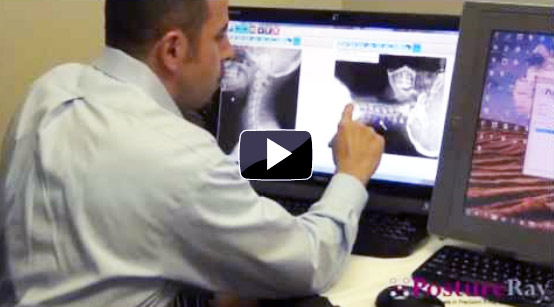The Omega-6/Omega-3 Ratio and Innate Neurological Function
 Sunday, April 1, 2012 at 3:03PM
Sunday, April 1, 2012 at 3:03PM  Dan Murphy, DC—
Dan Murphy, DC—
Private Practice of Chiropractic;
Diplomate American Board of Chiropractic Orthopedist;
Faculty Life Chiropractic College West;
Vice President ICA 2003-2009;
ICA Chiropractor of the Year 2009
INTRODUCTION
 Chiropractors pride themselves on improving the function of the nervous system by improving spinal mechanical integrity. However, it is also know that optimal neurological function requires a narrow, innate balance of omega-6 / omega-3 fatty acids. A recent article by physician and geneticist Artemis Simopoulos explores this relationship, and I have reviewed her article below:
Chiropractors pride themselves on improving the function of the nervous system by improving spinal mechanical integrity. However, it is also know that optimal neurological function requires a narrow, innate balance of omega-6 / omega-3 fatty acids. A recent article by physician and geneticist Artemis Simopoulos explores this relationship, and I have reviewed her article below:
Evolutionary Aspects of Diet: The Omega-6/Omega-3 Ratio and the Brain Molecular Neurobiology October, 2011; Vol. 44; No. 2; pp. 203-215
- · LA = linoleic acid (plant derived omega-6 fatty acid)
- · ALA = alpha linolenic acid (plant derived omega-3 fatty acid)
Dr. Simopoulos cites a number of sources indicating that human beings evolved on a diet that had a ratio of omega-6 to omega-3 fatty acids (FA) of about 1/1. Today, Western diets may have a ratio 25/1. Western diets are deficient in omega-3 FA compared with the diet on which humans evolved and their genetic patterns were established.
Omega-6 and omega-3 FA are important components of practically all cell membranes. The omega-3 FA docosahexaenoic acid (DHA) is essential for the normal functional development of the brain and retina. DHA accounts for 40% of the membrane phospholipid FA in the brain.
The omega-3 FAs eicosapentaenoic acid (EPA) and DHA have an effect on membrane receptor function and even neurotransmitter generation and metabolism.
The balance of omega-6 and omega-3 FA is important for homeostasis and normal development throughout the life cycle.
KEY POINTS FROM THIS STUDY INCLUDE:
- Nutrition is an environmental factor that influences gene expression.
- Major changes have taken place in our diet over the past 10,000 years since the beginning of the Agricultural Revolution, but our genes have not changed.
- The major changes that have taken place in our diets in the past 10,000 years include:
a) An increase in energy intake and decrease in energy expenditure;
b) An increase in saturated fat;
c) An increase in omega-6 fatty acids;
d) An increase in trans-fatty acids;
e) An increase in cereal grains;
f) An increase in fruit and vegetable intake;
g) A decrease in omega-3 fatty acid intake;
h) A decrease in complex carbohydrate intake;
i) A decrease in fiber intake;
j) A decrease in protein;
k) A decrease in antioxidants;
l) A decrease in vitamin D;
m) A decrease in calcium intake.
- “The beneficial health effects of omega-3 fatty acids, eicosapentaenoic acid (EPA) and docosahexaenoic acid (DHA) were described first in the Greenland Eskimos who consumed a high seafood diet and had low rates of coronary heart disease, asthma, type 1 diabetes mellitus, and multiple sclerosis. Since that observation, the beneficial health effects of omega-3 fatty acids have been extended to include benefits related to cancer, inflammatory bowel disease, rheumatoid arthritis, psoriasis, and mental health.”
- The change of omega-6/omega-3 ratio in the food supply of Western societies has occurred over the last 150 years.
- “During evolution, omega-3 fatty acids were found in all foods consumed: meat, wild plants, eggs, fish, nuts, and berries.”
- Today in Western societies the omega-6/omega-3 ratio is very high due to the high intake of soybean oil, corn oil, sunflower, safflower, and linseed oil.
- The omega-6/omega-3 ratio is associated with normal “growth and development, as well as in the outcome of hypertension, cancer, arthritis, mental health, allergies and other autoimmune diseases,” as well as the “pathophysiology of atherosclerosis, inflammation, and aging.”
- “DHA is found in high amounts in the membranes of brain and retina and is critical for proper neurogenesis, neurotransmitter metabolism, neuroprotection and vision. The consumption of high amounts of DHA has been associated with multiple health benefits including brain and retinal development, aging, memory formation, synaptic membrane function, photoreceptor biogenesis and function, and neuroprotection. DHA is essential for pre-natal brain development.”
- Omega-3s cause apoptotic death in cancer cells whereas omega-6s allowed the cancer cells to continue to proliferate.
- Diets with a high omega-6/omega-3 ratio may enhance the risk for both depression and inflammatory diseases.
- “Clinical studies show that cognitive performance improves with omega-3’s.”
- Omega-3’s can affect not only cognitive functions, but also mood and emotional states and may act as a mood stabilizer. Omega-3’s have beneficial effects in some neurological diseases in addition to the chronic fatigue syndrome.
- Omega-3 deficiency in childhood delays brain development, and produces irreversible effects, while the same deficiency in aging accelerates the deterioration of brain function.
- Omega-3 intake from ALA does not provide adequate intakes of EPA and DHA.
- “Western diets are characterized by high omega-6 and low omega-3 fatty acid intake, whereas during the Paleolithic period when human’s genetic profile was established, there was a balance between omega-6 and omega-3 fatty acids. Therefore, humans today live in a nutritional environment that differs from that for which our genetic constitution was selected.”
- “The balance of omega-6/omega-3 fatty acids is an important determinant in maintaining homeostasis, normal development, and mental health throughout the life cycle.”
- The AA/EPA ratio has been proposed as an index for the omega-6/omega-3 ratio.
- Omega-3 deficiency in the brain is associated with “decreased learning ability, with a lower synaptic vesicle density in the hippocampus; whereas, chronic administration of omega-3’s improves reference memory-related learning probably due to increased neuroplasticity of the neural membranes.”
- “Cognitive performance improves with omega-3’s supplementation possibly due to increased hippocampal acetylcholine levels, the anti-inflammatory effects of omega-3’s, decreased risk of cardiovascular disease or increased neuroplasticity.”
- Omega-3 fatty acids have positive effects in patients with dementia, schizophrenia, depression and other central nervous systems diseases.
- Omega-3 fatty acid supplementation could play a role in reduced hostility and violence.
- “In carrying out clinical intervention trials, it is essential to increase the omega-3 and decrease the omega-6 fatty acid intake in order to have a balanced omega-6 to omega-3 intake.”
- “In humans, the brain is the most outstanding organ in biological development: it follows that the priority is brain growth and development, and in the brain the balance between omega-6 and omega-3 PUFA metabolites is close to 1:1. This ratio should be the target for human nutrition.”
- “The ratio of omega-6/omega-3 fatty acids in the brain between 1:1 and 2:1 is in agreement with the data from the evolutionary aspects of diet and genetics.”
- “A ratio of 1:1 to 2:1 omega-6/omega-3 fatty acids should be the target ratio for health.”
COMMENTS FROM DAN MURPHY
The omega-6/omega-3 fatty acid ratio (AA/EPA) is innately critical for brain function, heart health, immunity, joint health, pain syndromes and more. I believe that everyone should have the AA/EPA ratio tested to see if they are in the “target ratio” of 1-2/1, AA/EPA.
Several labs offer testing of the AA/EPA ratio. The test is called Bloodspot Fatty Acids 0241. The test is a finger prick draw, not venipuncture. If you would like information on the lab I personally recommend, contact me at dan@danmurphydc.com.
Some nutritional companies offer more optimal ratios of ALA, EPA, DHA, and GLA. If you would like information on the omega-3 oils I personally recommend and take for myself, contact me at dan@danmurphydc.com.
The target ratio’s of EPA/DHA is different for children and adults. To achieve their “target ratio” most adults need to consume 3,000 mg/day of EPA+DHA
 CBP Seminars | Comments Off |
CBP Seminars | Comments Off |  Chiropractic,
Chiropractic,  Dan Murphy,
Dan Murphy,  Omega 3
Omega 3 



